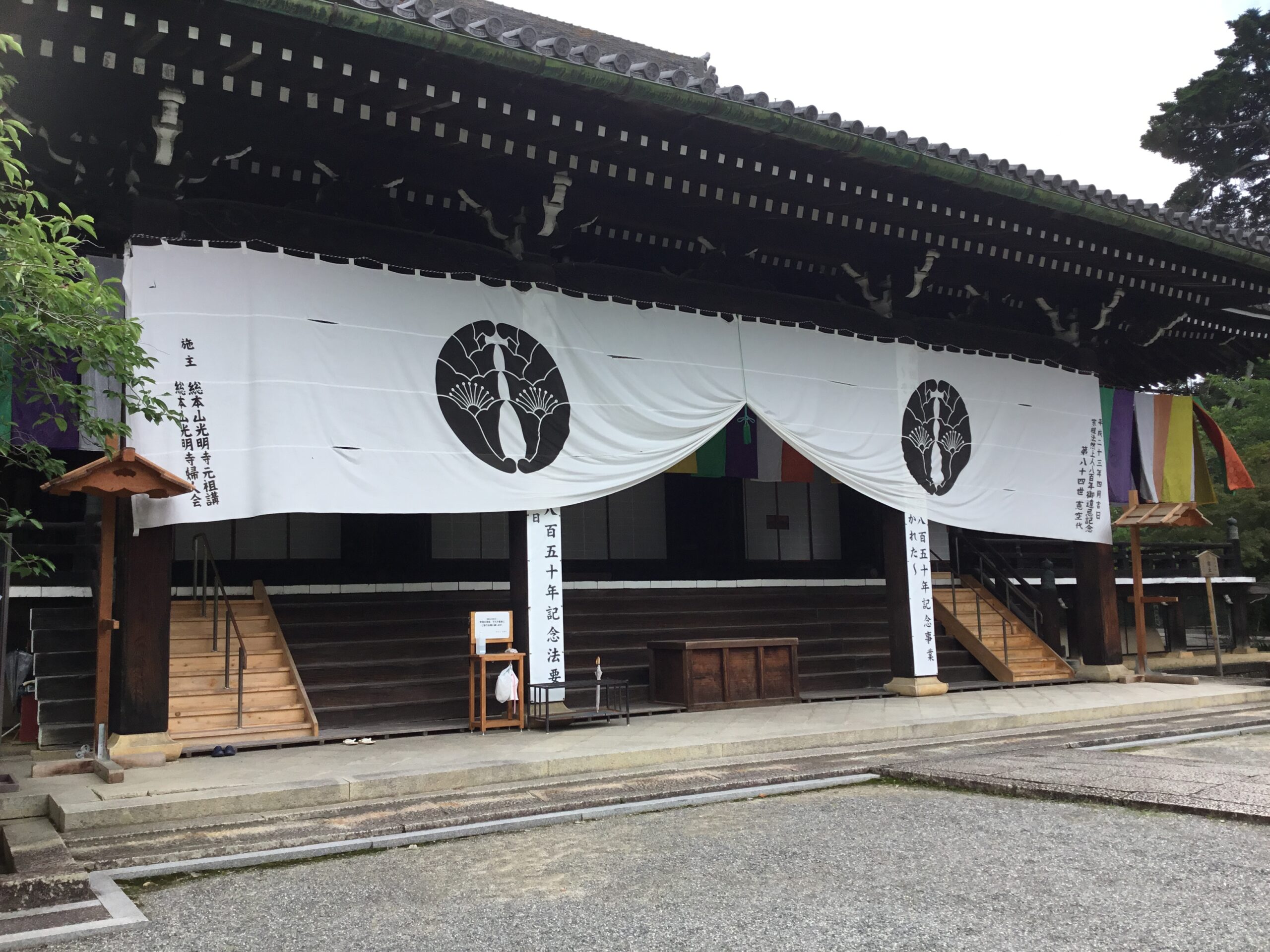Komyoji Temple, the head temple of the Seizan Jodo sect, is located in Ao Hirotani at the foot of Nishiyama, Nagaokakyo City.
The recommended time to visit here is around November when you can see the autumn leaves, but this article touches on the history of Komyoji Temple. Because if you learn the history of this place, you will be more impressed than when you visited here.
Komyoji has 3 important cultural properties and 17 tangible cultural properties designated by Nagaokakyo City. A signboard stands so that you can see the position.
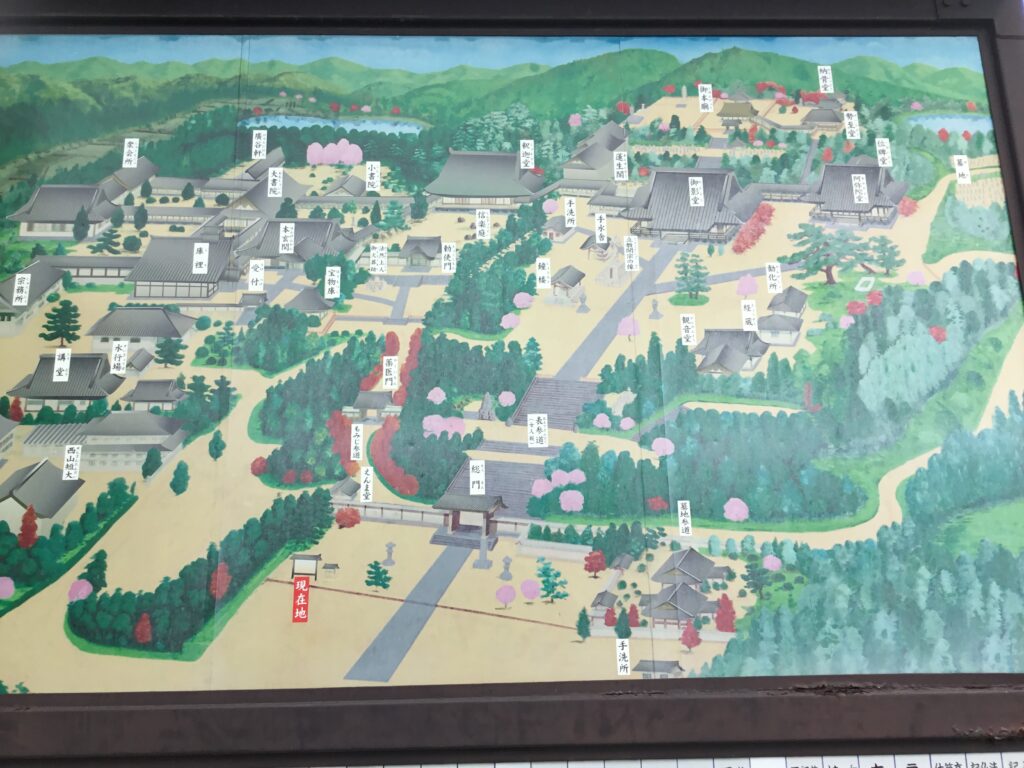
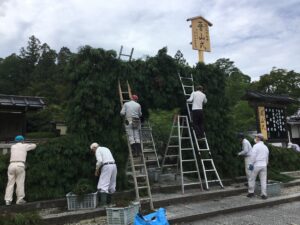

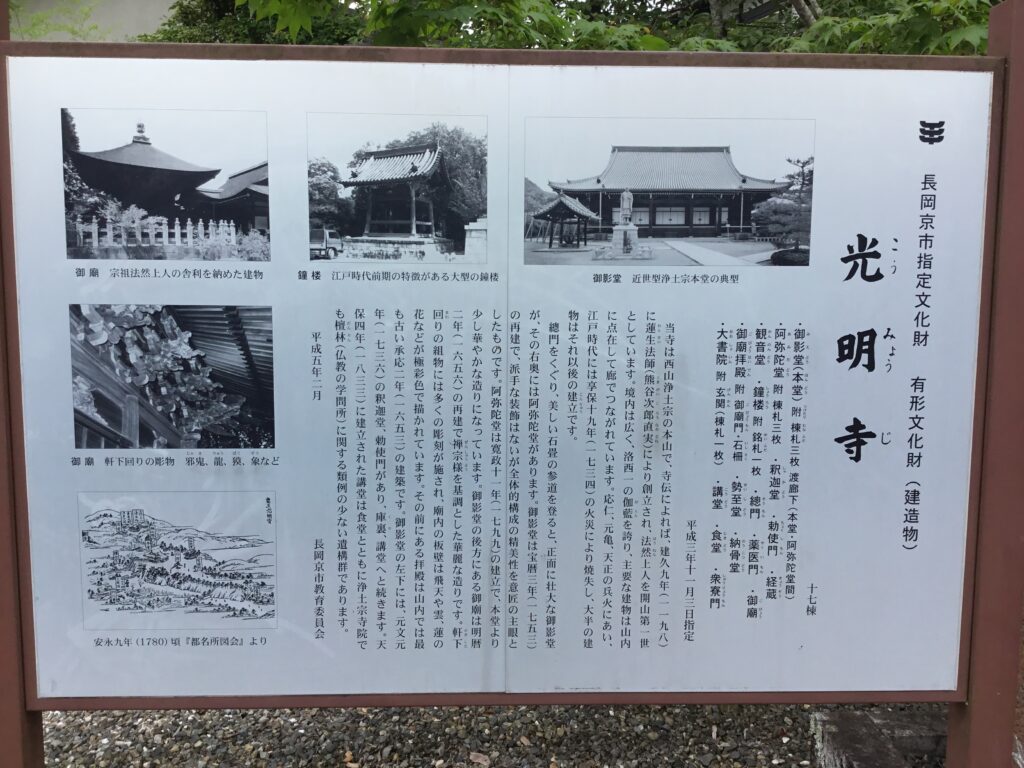
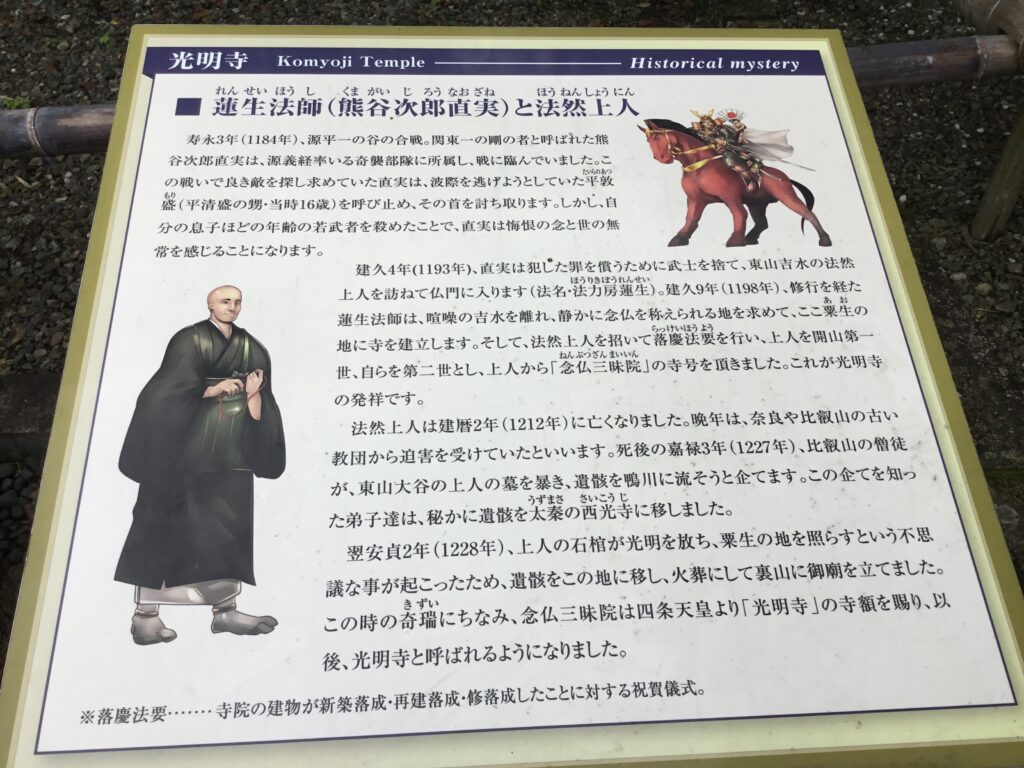
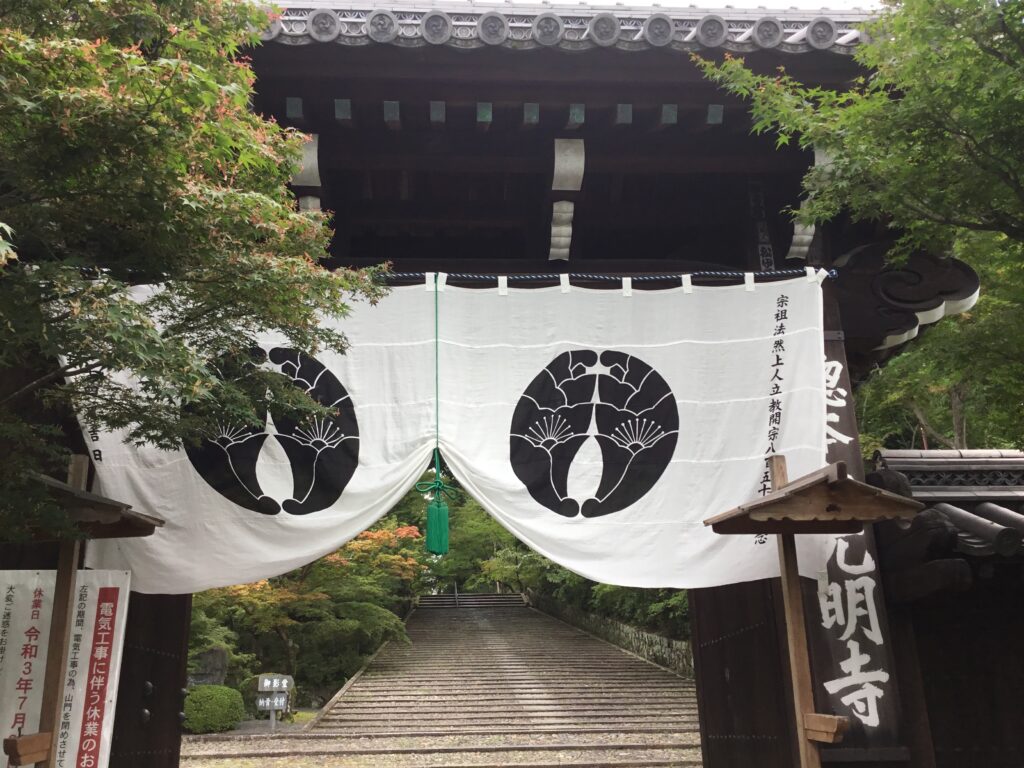
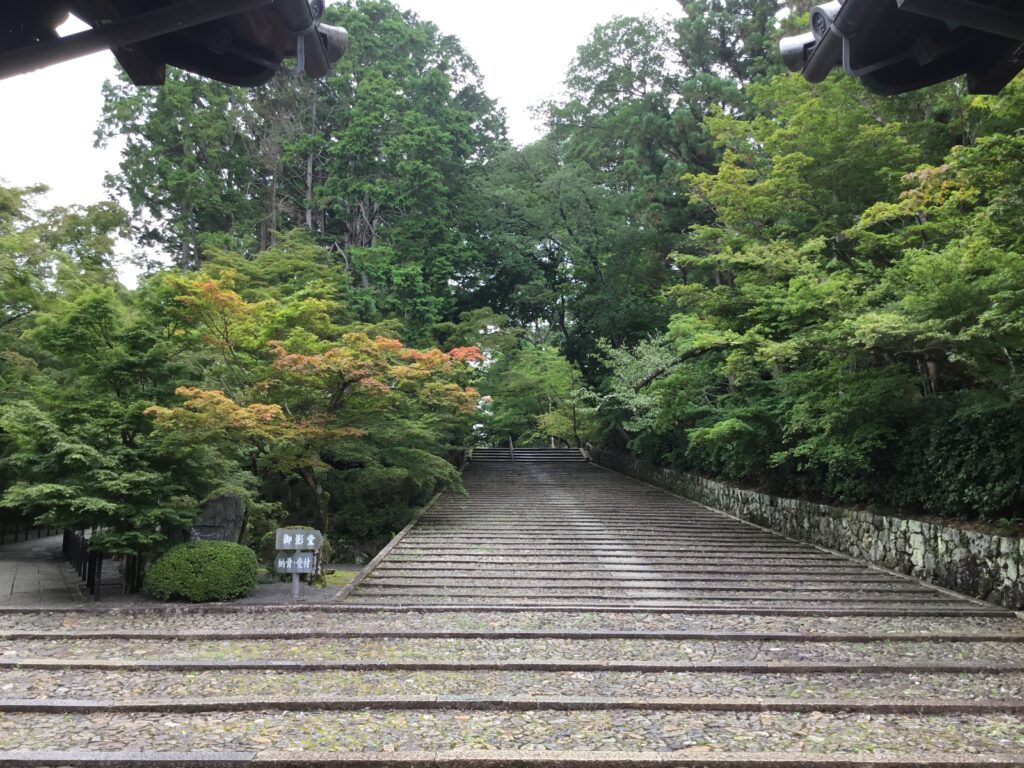 「 Women’s slope (Noninzaka) 」
「 Women’s slope (Noninzaka) 」
It is easy for everyone to worship at the gently sloping stairs called.
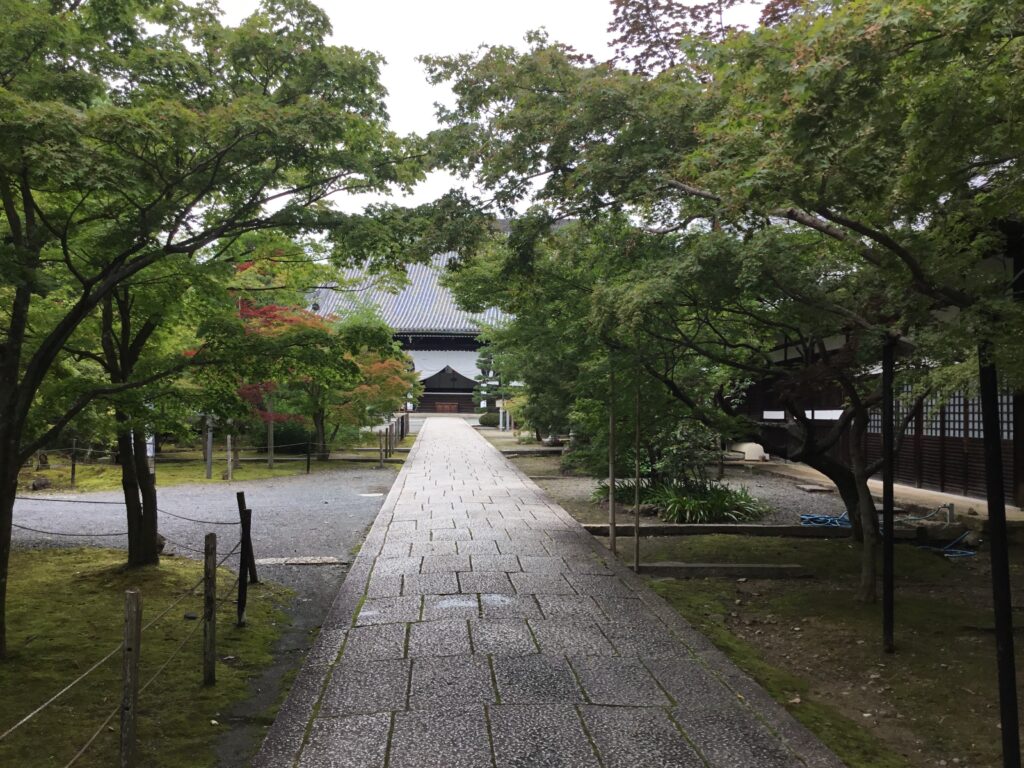
Komyoji Temple, the head temple of the Seizan Jodo sect, is located in Ao Hirotani at the foot of Nishiyama, Nagaokakyo City. It is the place of the founding of the Rikkyo sect, which was the first in Japan to raise the birth of Nembutsu when Honen, the founder of Enko Daishi, was 43 years old.
When Honen was 24 years old, when he got off Eyama in search of a teacher who should become a master in Nara, he rented an overnight inn at this village of Aono, Shigeemon Takahashi, who was the villager at that time. I did. At that time, the Moetmon couple heard that their superiors were seriously seeking a method and that they were traveling in search of a way to save the general public. Please tell us about that precious teaching together. ”
Time passed, and in March 1175, the superior who finally opened the Jodo sect, as promised for 20 years, was the first to preach the Nembutsu Homon in this land of Aono.
In the first year of Bunji (1185), Rensei Kumagai (Naozane Kumagai), who is famous for the battle of Genpei, apologized for his accumulated sins and sought a way of paradise from the end of the battle. I visited.
I was delighted with the thankful teaching that “No matter how deep my sins are, if I tell the Nembutsu with all my heart, I will be saved,” and immediately became a disciple and shaved my hair. Named Honenbo Rensei, after several years of training, he left the hustle and bustle of Yoshimizu and sought a place where he could quietly honor the Nembutsu. He built a temple in Hirotani, solicited Honen superiors to run the Buddhist memorial service, and looked up to Kaisan as the first generation. He became the second generation himself, and received the temple name of “Nembutsu Sanmaiin” from his superiors. This is the origin of Komyoji Temple.
Honen’s superior died on the 25th day of the second year of the Kenryaku calendar (1212) when he was the third generation Koajo. In his later years, he was persecuted by an old cult of Eiyama in Nara, and in the third year of Karoku (1227) after his death, the people of Eiyama uncovered the tomb of Otani and attempted to flush the remains to Kamogawa. The younger brothers secretly moved the sarcophagus of the corpse to Saga and then to Saikou-ji Temple in Taihata. On the night of the 20th day of the following year, the second year of Antei, a few lines of light were emitted from the casket of the superior, and a strange cremation appeared that illuminates the southwestern Aono, so on the 25th of the same month, the remains were placed in this Aono area. The temple was built on the back mountain of the temple with a cremation bone attached to the coffin. After that, Nembutsu Sanmai-in was called Komyoji after Chery.
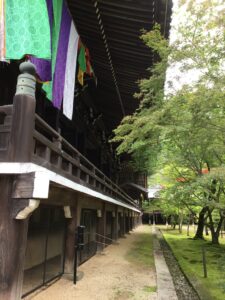
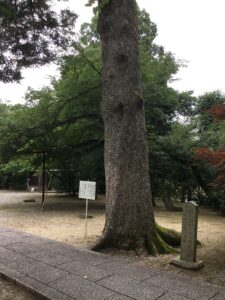

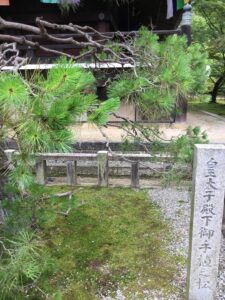
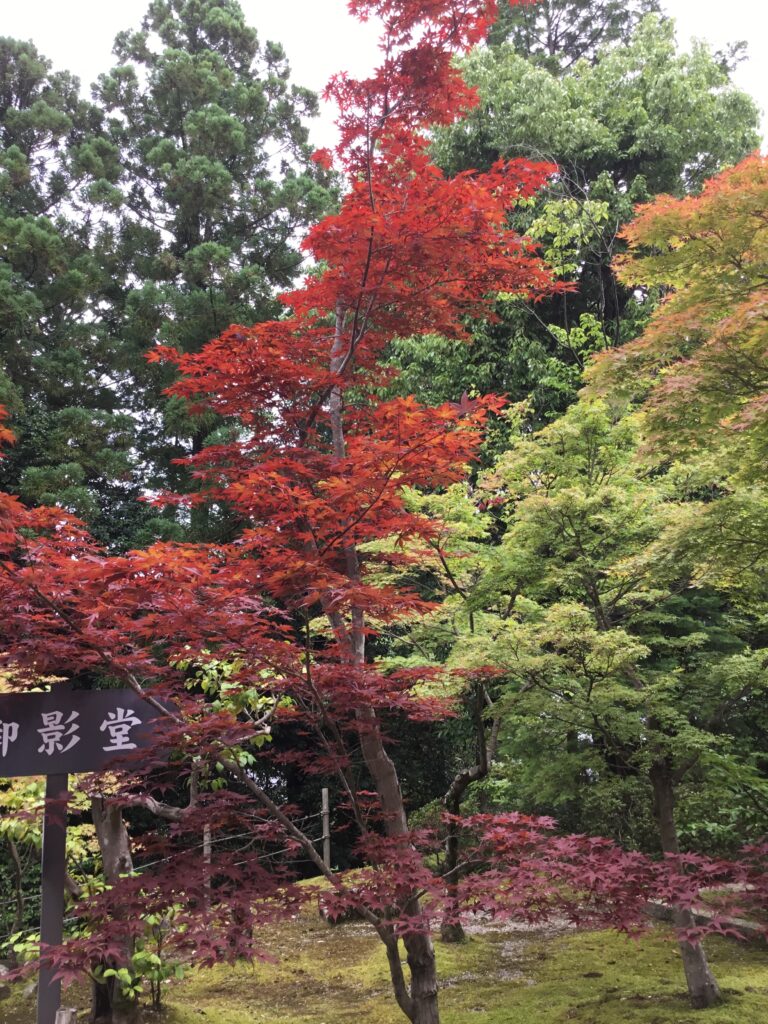
It turns bright red when it is time for the autumn leaves.
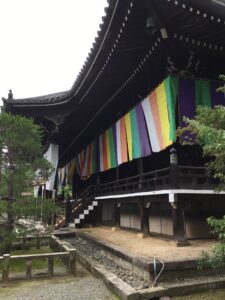
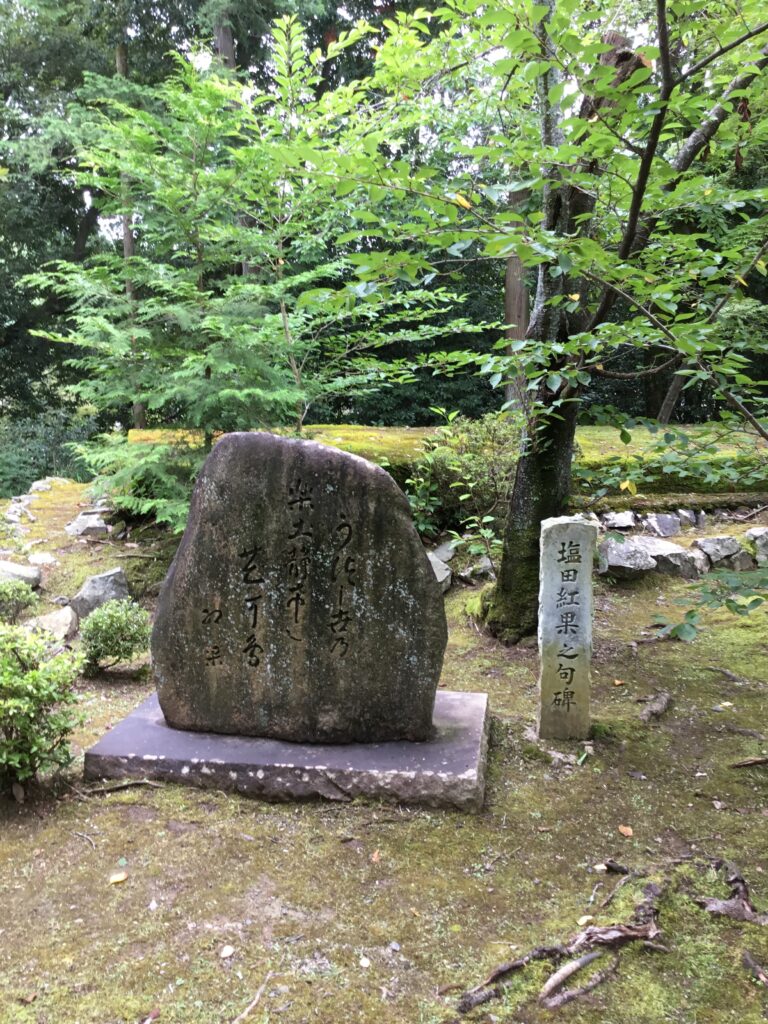 A monument to the poet, Benika Shioda, who was active in the early Showa period
A monument to the poet, Benika Shioda, who was active in the early Showa period
To Transfer world of paradise Shizukeshi flower it is written to the birds and stone. It’s a poem about Komyoji
ADRESS ; 26-1 Ao Saijo Nouchi, Nagaokakyo City, Kyoto Prefecture
